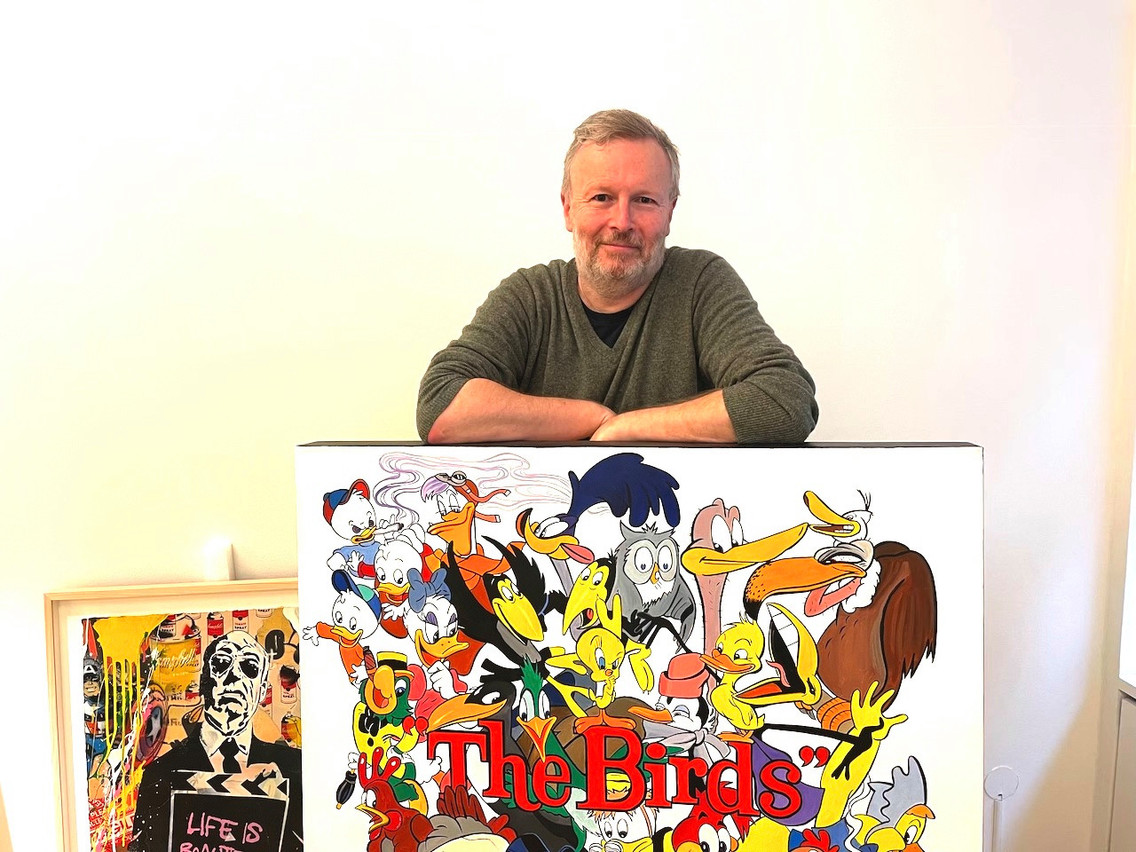Some 42 years after his death, Alfred Hitchcock continues to inspire not only filmmakers but also artists, fashion designers and musicians. His unmistakable image is instantly recognisable, and arguably only Charlie Chaplin, Walt Disney and Marilyn Monroe from the annals of 20th Century film making have retained such iconic status.
The legacy of Hitchcock is the subject of a new exhibition at the Cercle Cité’s Ratskeller – which around this time of year always features a cinema-themed show to coincide with the Luxembourg City Film Festival. What is different about Hitchcock: The Brand is that it is entirely gleaned from the personal collection of film historian Paul Lesch.
His fascination with Hitch began in the mid-70s when, as a youngster of 13 or 14, he started to look at film differently. TV stations in Germany, Belgium and France would frequently show Hitchcock films in the evening.
Lesch also recalls buying the German version of François Truffaut’s famous book on Hitchcock, which in German was titled rather pragmatically Mr. Hitchcock, wie haben Sie das gemacht? (Mr. Hitchcock, how did you do that ?).
All the basic elements of filmmaking were being explained in a rather easy way.
From that moment, whenever a Hitchcock film was shown on TV, Lesch would reach for the book and read the appropriate chapter. “What I learned about film in general was that there is the director and author, who knows how to, let’s say, manipulate the audience, knows the use of setting, décor, music, montage, and so on. So all the basic elements of filmmaking were being explained in a rather easy way. For me, as a movie buff, Hitchcock was the key to what cinema was about.”
A keen collector
Lesch, like many youngsters at the time, also liked to collect things. He would cut out and keep the TV guide descriptions of the films he watched. And at the same time he started asking stars for autographs via official fan clubs or agents, whose details were also published in magazines. So he sent photos he had cut out and requested the autographs of the likes of German actors Wolfgang Kieling (who featured in 1966’s Torn Curtain) and Karin Dor (from 1969’s Topaz).
When he saw Alfred Hitchcock’s address--Universal Studios in Burbank--Lesch wrote in what he calls the “basic English” he had at the time. A short time later he received a return airmail envelope containing a card with Hitchcock’s signature. But the return address was not Universal Studios, but the director’s home address at 10957 Bellagio Road, in Belair, Los Angeles. “So that was something I was really proud of.”
At around the same time, Lesch began to make trips to Paris, and occasionally to London, to buy books on the director. But as a student, the cost of his hobby started becoming untenable. It was only a few years ago, now earning a decent living and having reached a certain age, that nostalgia caught up with Lesch and he wanted to go back to his roots as a cinephile and restart his collection. But this time he went all in. “So I decided to buy all the books I could find on Hitchcock, in all languages, every edition.” He now has some 500 books on the director. “But at least 390 different books, in 18 different languages including at least a dozen in Farsi.”
International phenomenon
It was Hitchcock as this international phenomenon that then began to fascinate Lesch. And it was something that the director himself was very active in promoting. “He started in the 1950s as a film director to be active on TV, and at that time, TV was something that people in the film industry looked down on, because he did it for the money.” The series, which ran for 10 years and was also syndicated and given numerous reruns, also helped reinforce the Hitchcock brand. “Because he could play on this macabre, very British sense of humour,” says Lesch.
This realisation that Hitchcock was a cultural phenomenon in his own right inspired Lesch to start seeking out all manner of other artefacts. Firstly posters, though not of the original films--“they can be quite expensive”--but from special screenings, festivals, photography exhibitions that pair tribute to the director.
And then he started collecting works of art that paid homage to Hitchcock by the likes of street artists Mr Brainwash (the subject of the Banksy film Exit Through The Giftshop) and Luxembourg artists Tina Gillen.
Hitchcock is, after all, one of the rare directors for which an adjective was created
There is also Adam Pobiak’s Hitchcock inspired posters for concerts by The Flaming Lips. And talking of music, Lesch was also fascinated by Eminem’s Music To Be Murdered By, which title and alternative cover artwork mimics a 1958 Hitchcock record. Another renowned cultural figure of the late 20th and early 21st Century, fashion designer Alexander McQueen, also paid tribute to Hitchcock in two collections and the exhibition at the Ratskeller features a poster of his The Man Who Knew Too Much show which is actually based on Saul Bass’s iconic poster for Vertigo.
The exhibition also includes film clips and some of the famous trailers that Hitchcock made for his own films, often focused on himself and mostly with tongue planted firmly in-cheek, rather than the movie it was supposed to be promoting.
So, as Lesch says, there is plenty of evidence that the Hitchcock brand is still very much alive and kicking. “Hitchcock is, after all, one of the rare directors for which an adjective was created - Hitchcockian. I’m not saying that the brand will survive for another 100 years, but still 40 years after his passing, it's still there.”
is on at the Ratskeller in the Cercle Cité, entrance rue du Curé, from 11 February until 10 April. Guided tours in English take place at 3pm on Saturdays 19 February, 12 March and 2 April.


